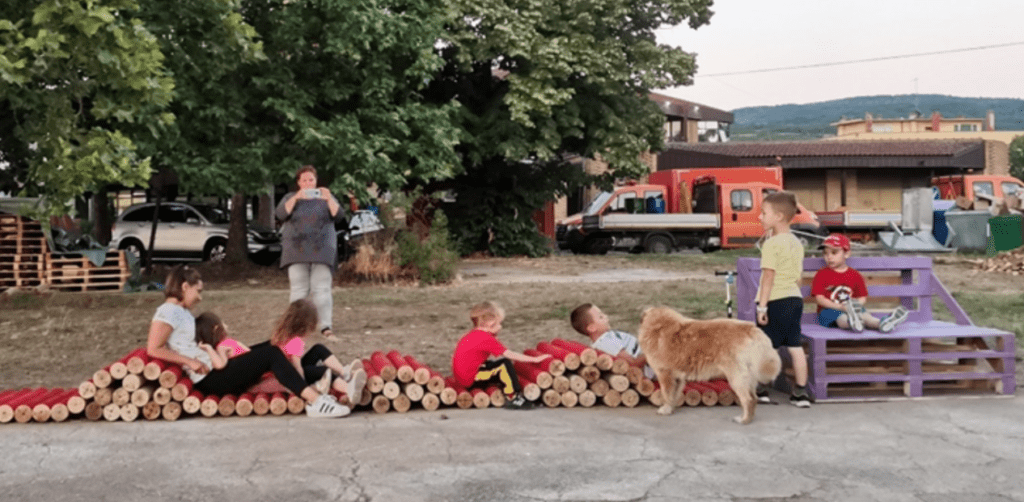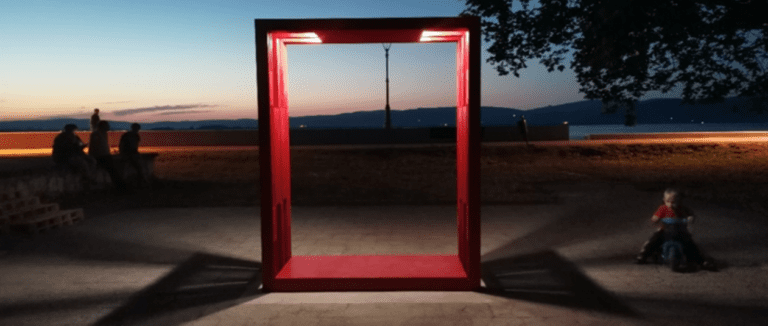Building camps for students are one of the main activities of DANUrB+ INTERREG Project in the working package WP.T4 “Actions – putting the heritage of the Danube into action: local, regional and international projects”. The activities related to preparation and organization of the building camps are labeled as the thematic deliverable 4.4.1., under the title “Building camps for students to materialize valorisation processes together with local communities”. This deliverable was specially formed for six universities which are the project partners, to carry a part of their education activities in situ, in a small city or town which has the status of a strategic associate partner in the project.
The University of Belgrade – Faculty of Architecture, as one of the six university project partners in the DANUrB+ Project formed a working team consisting of teachers and 32 students and organized a building camp (BC) in the town of Golubac in Eastern Serbia. The BC was organized on June 21-24, 2022.
Golubac has recently become an important destination of cultural tourism along the Danube River in Serbia, at the entrance position of the Iron Gates Gorge, the longest one on the Danube and in Europe. This development has been especially driven by the reconstruction of medieval Golubac Fortress, located 4 km downstream of the town. The BC was developed in the waterfront area, in the city center.

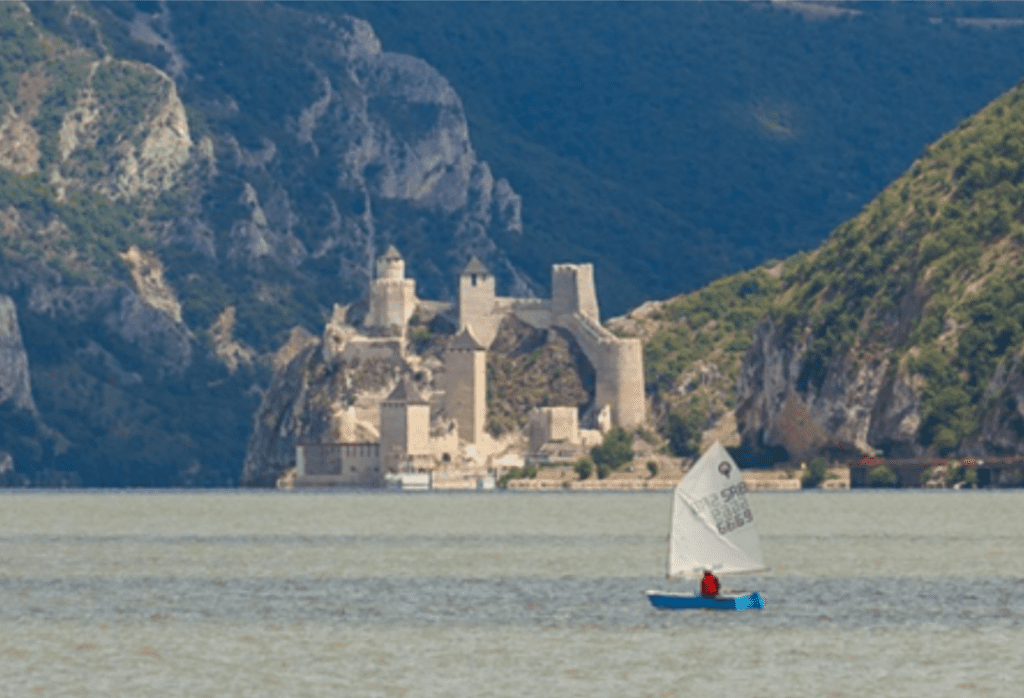
The BC entitled Danube pavilion_Golubac Building camp presents a unique participatory process between professionals, teachers, students and the local community, combining education, knowledge transfer and community involvement in a single project.
The exact area selected for the BC is located on the waterfront area, with great potential because of the proximity to housing and public facilities, as well as natural characteristics such as Danube vistas and greenery. However, regardless of the potential, there were several issues regarding both spatial characteristics and functional aspects. The specific location was neglected and unused, and this part of the town needed an interesting type of open public space for youngsters. Also, there was a lack of involvement and mutual collaboration between local stakeholders and cross-border collaboration with the Romanian side.
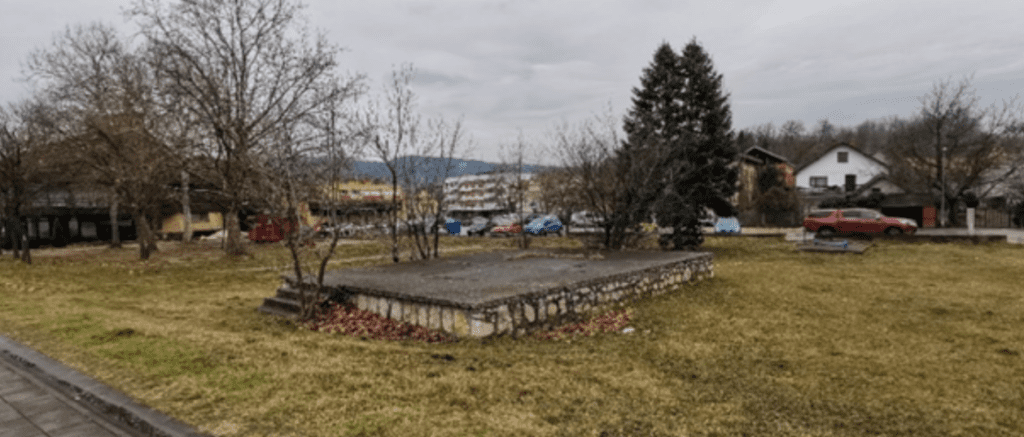
The main goal of this Building camp was to start a multi-level participation process and to make an interactive and unique space that will continue to “live” even after the implementation and could represent a new platform for festivals, performances and future collaboration. Additionally, the goal was education and knowledge transfer with the Romanian teachers and students. From the very beginning, from the initial idea about the BC in Golubac, the coordination with the Faculty of Architecture and Urbanism of Politehnica University of Timișoara was established. They carried out a similar BC for their students in July 2022 in the Romanian town of Moldova Noua, which is a twin town to Golubac, across the Danube.
The overall process of the BC development was done in several phases. It required a preparation stage before the execution, as well as the promotion stage after the execution. The process was divided into four main steps.
Step 1: Research included the site location and site research, including the collaboration with local community and teachers and students from Timișoara. Step 1 included several meetings with local representatives and the Tourist organization of Golubac, in order to define the best location for the BC. Also, students visited Golubac with teaching staff for fieldwork regarding the camp site, they spoke with local experts and citizens relating to their opinion and intentions for the BC site. Later on, students started developing their project, from initial design concepts to the exact small-scale 3D models and their position on the site.
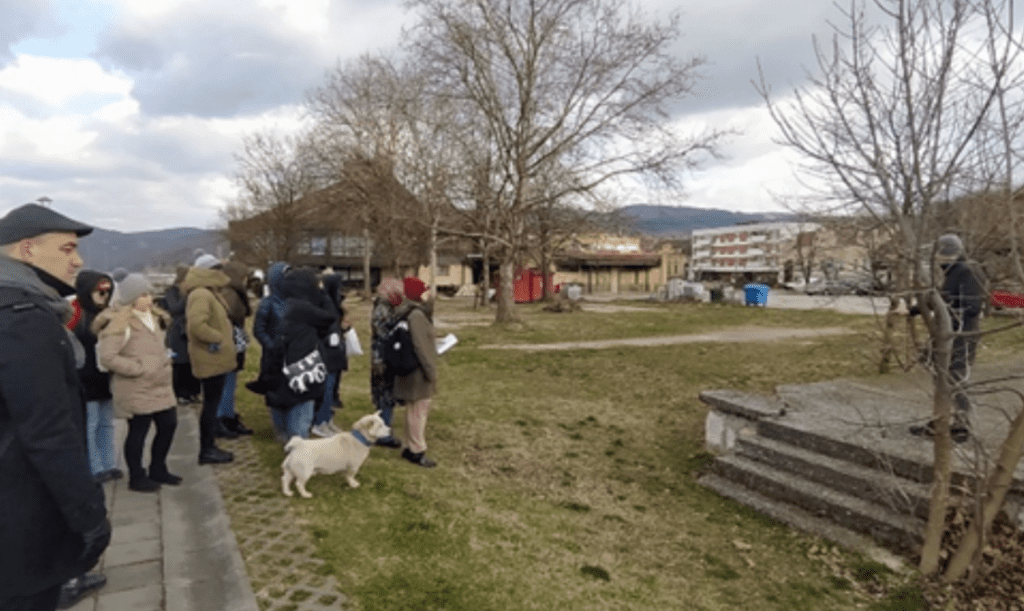
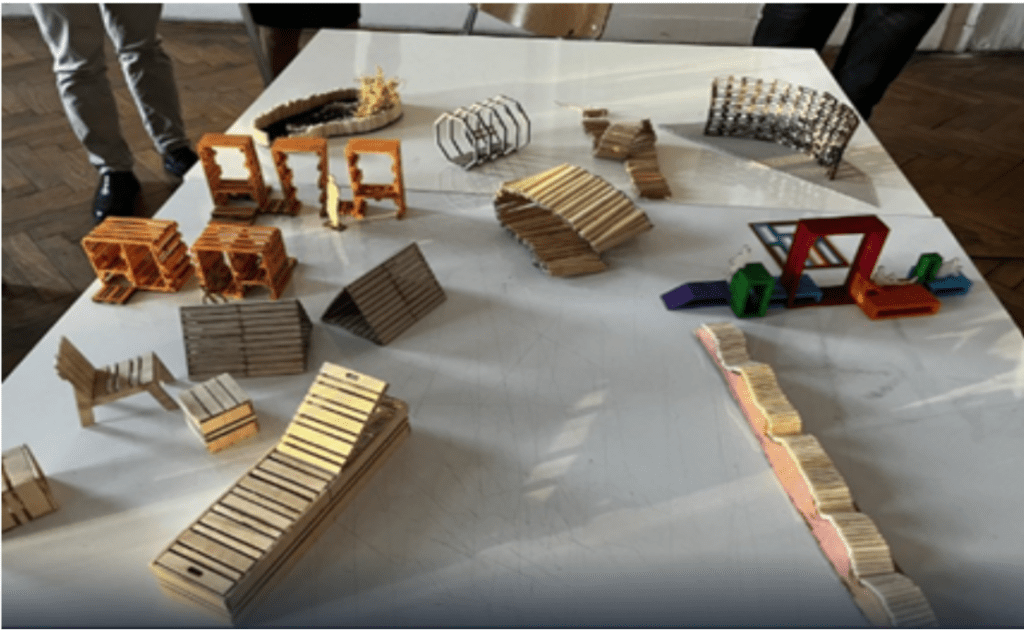
Step 2: Preparation included preparation of the site for construction of the new park – the BC. The Belgrade team, with the help of the tourist organization, cleaned and repaired the site. These actions attracted the attention of locals and people, from older generation to children, who then joined the process of BC development.
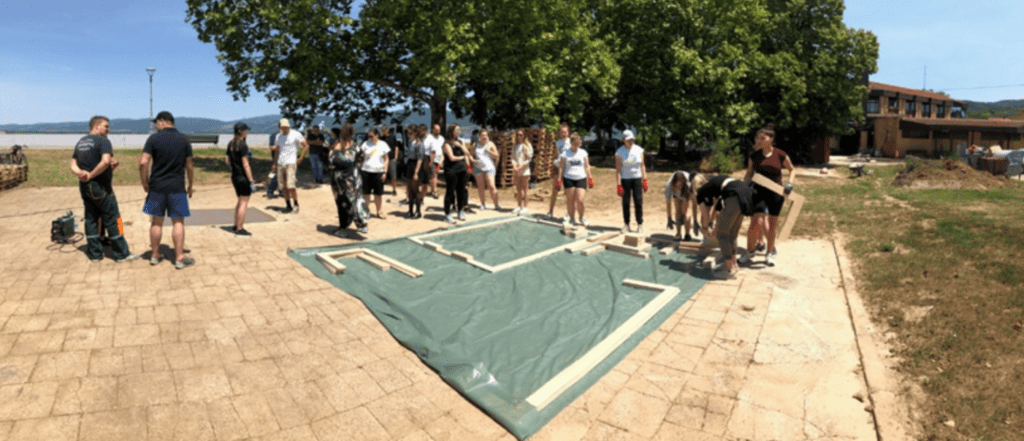
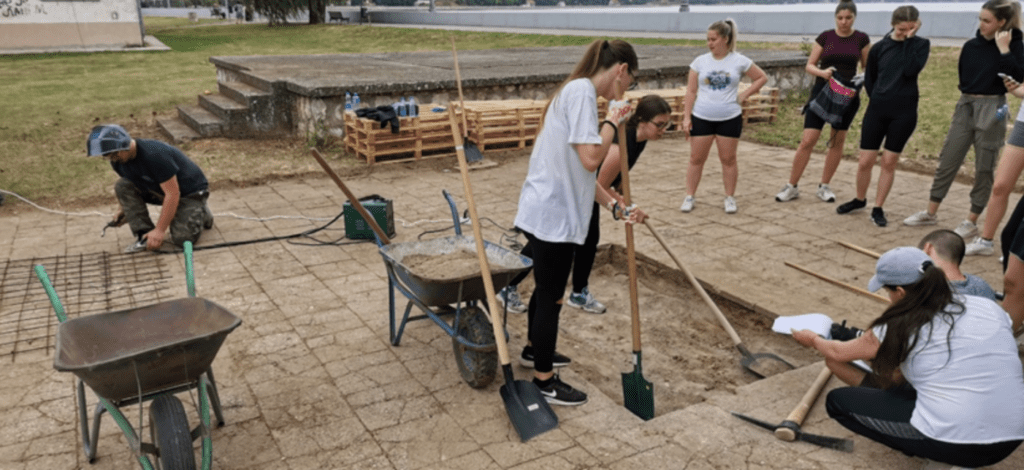
Step 3: Making the urban furniture included constructing individual elements of urban furniture from wood. The core activity was the assembly of the main elements of urban furniture. The building site was divided into several small locations, and more than 10 pieces of urban furniture were developed, including different designs for the sitting area, small amphitheater, library, and the “portal”. The available material and tools, changing weather and time schedule resulted in constant transformation of the predefined design and concepts. The students had to adapt their design to the context and had to learn new skills for construction and communication with the local community. A special self-reliant solar lightening was installed into the furniture, to allow the use of the new park during evenings, thus making these structures interactive and interesting for users, as well as safer for nighttime usage.
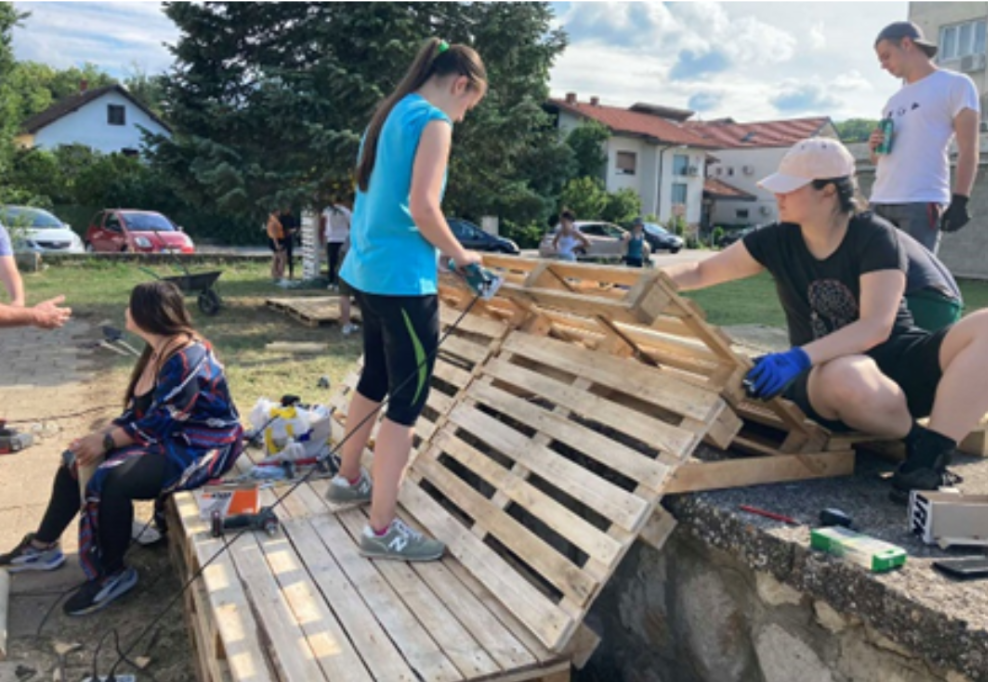
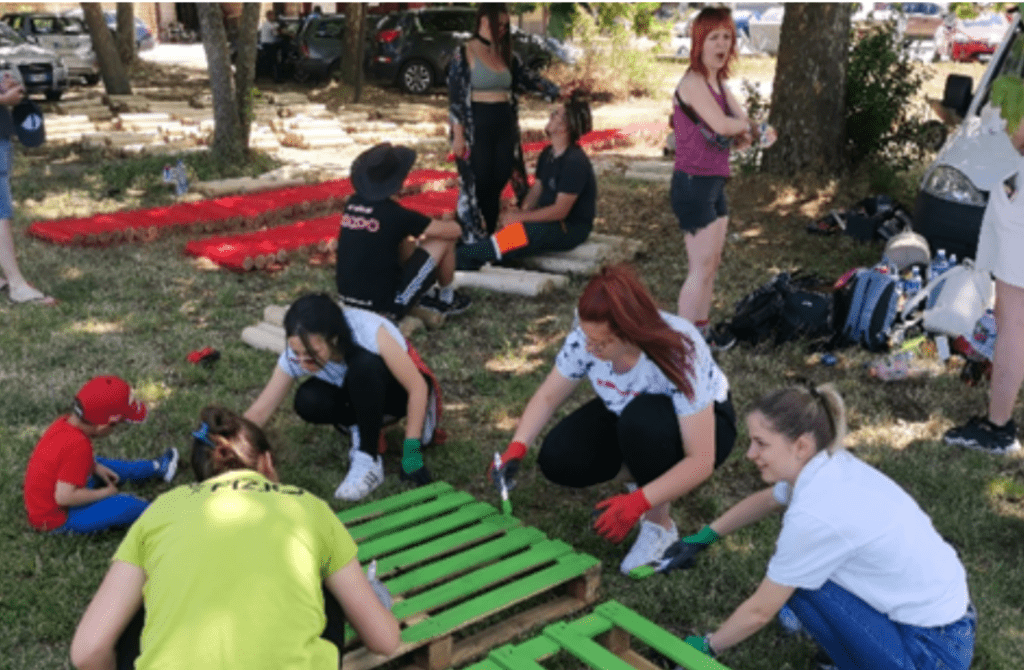
Step 4: Promotion and usage included the promotion and dissemination of the process and the result of BC, and specific usage by the locals. One of the important parts of this BC was the promotion, which included the exhibition of student work and promotion in the media. The BC was also visited by the journalist teams of Radio Television Serbia and “Mlava” Regional Television. The photos depicting the process of BC construction and final appearance were promoted on social media by all the participants, teachers and students from Belgrade and Timisoara, from the local citizens, local representatives and tourist organization. The usage of BC was different, from children using it as a polygon playground, to the youngsters who rearranged the furniture for better socialization during the nighttime.
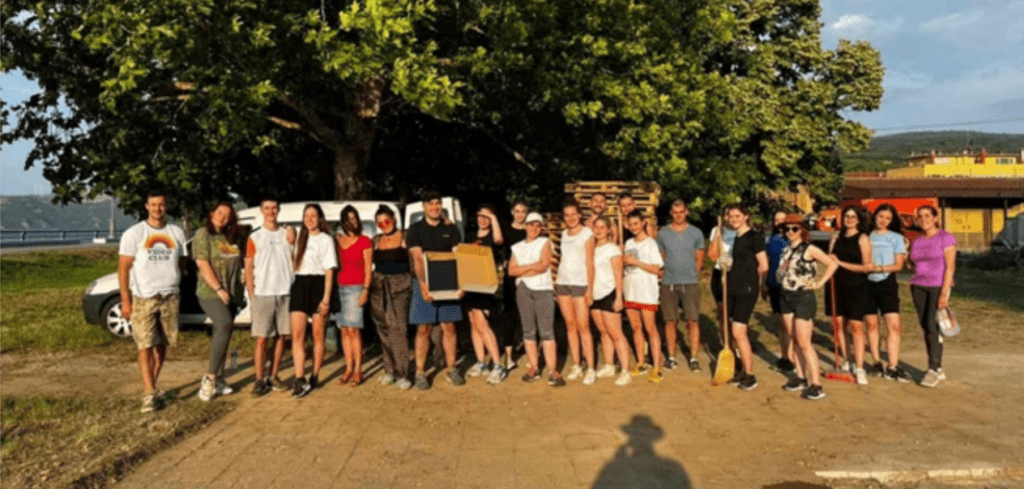
The keywords that best represent the experience of BC development could be summed up as: participation, adaptation, exploration, variety of usage, promotion, transformation, performance and fun! The process of developing the BC was more precious than the outcome. Although the overall execution was followed with many obstacles and changes, the results exceeded the primary expectations. Local stakeholder engagement was crucial for the successful execution of the BC in Golubac. The colorful appearance of the park, the interactivity of the furniture lightning, the possibility to change the arrangement of sitting areas and the variety of usage of the furniture all contributed to strengthening the local identity. Knowledge transfer and education was one of the main values and goals of the BC that was developed through the work of the students and teachers and collaboration with the Faculty of Timisoara.
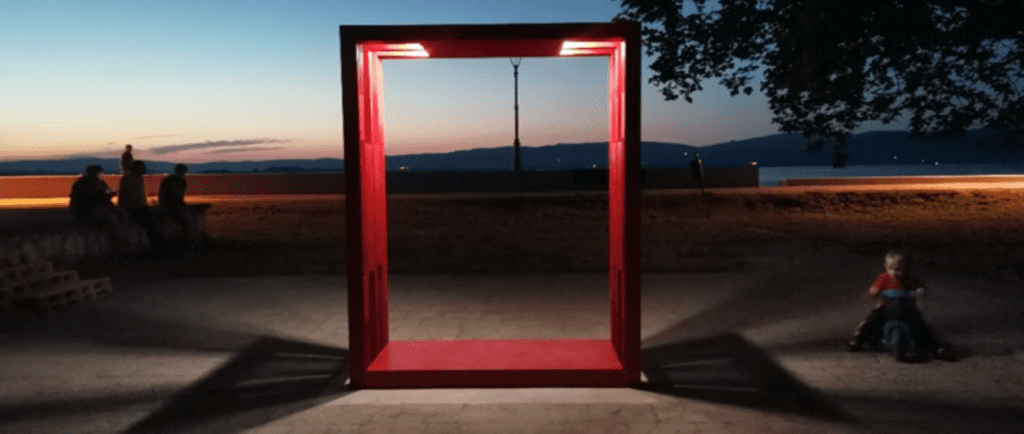
The new public park in central Golubac became a very popular place for socialization. It has attracted all types of users: citizens in general, people in nearby streets, and tourists. The National library in Golubac has provided books about the town in a special element with book shelves. Children have been especially fond of the new square. They have found their own ways to use urban furniture, in contrast to the first plans.
Immediately after the building camp, the Tourist Organisation of Golubac opened an initiative to add flowers and more greenery around the new square. This was implemented during summer 2022. The Tourist Organisation has also promoted the square through their social media during building camp and after it. Aside from all the positive effects of the new park, some small problems have occurred, too. The element with bookshelves, and other urban furniture, had small breaks during the windiest days, so locals spontaneously organized themselves and fixed all the broken and damaged furniture.
Now, this public town park called “Danube pavilion_Golubac Building camp” represents a new platform for a variety of performances and festivals as well as promotion of different cultural events and activities.
